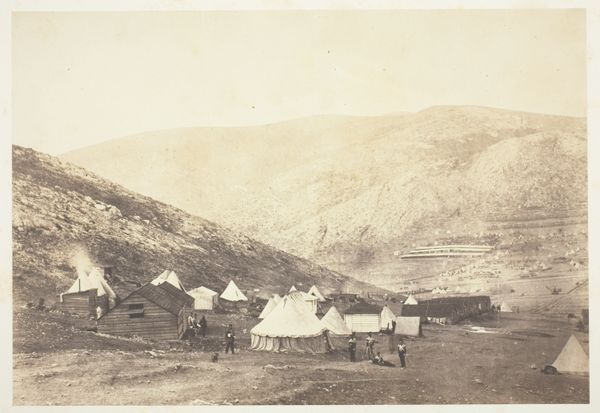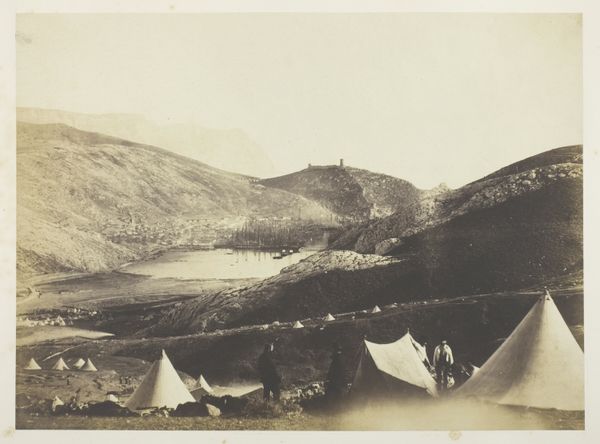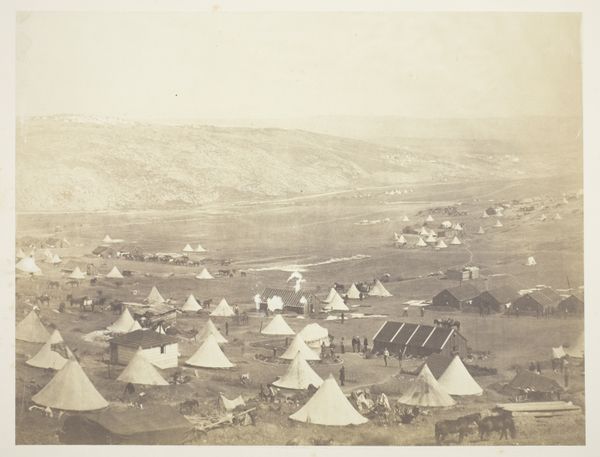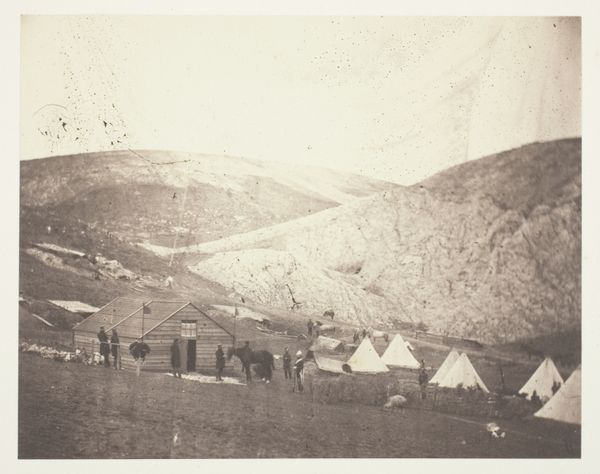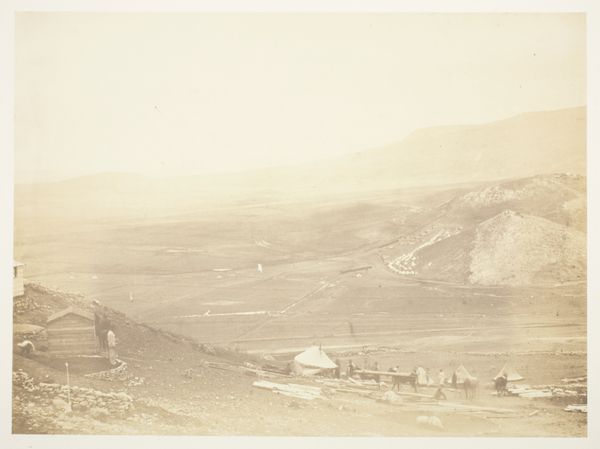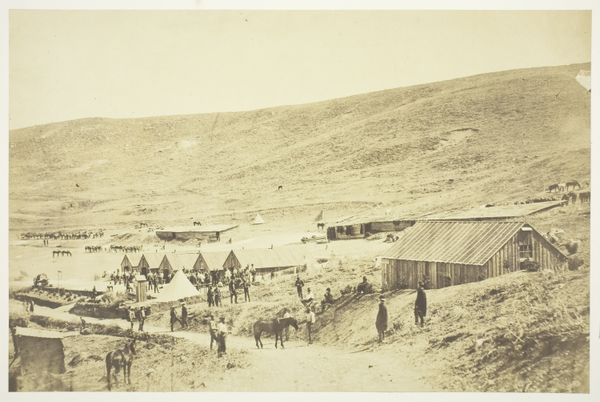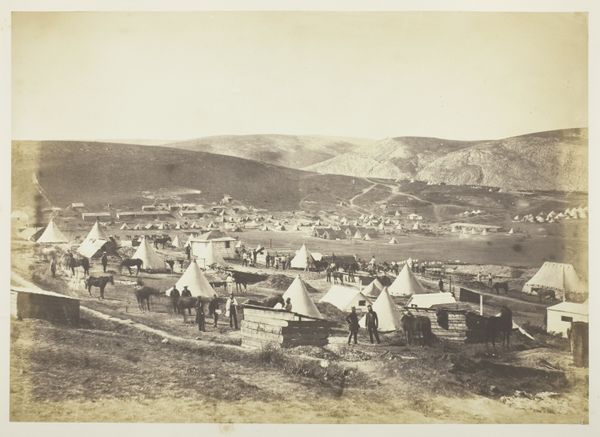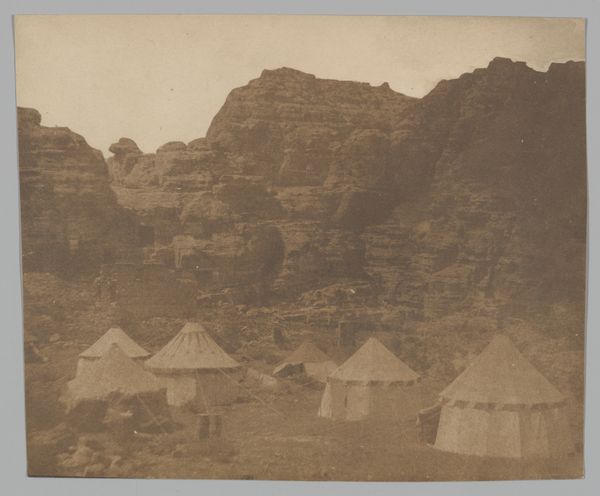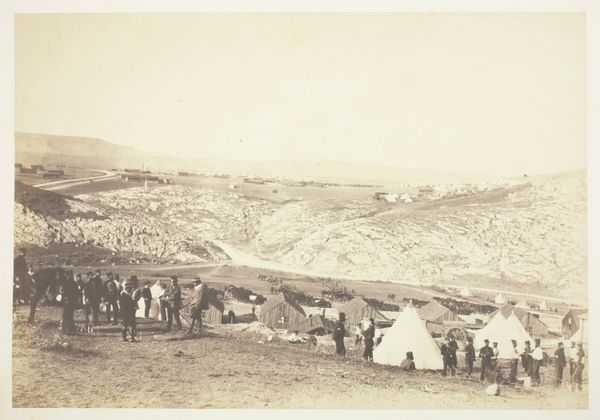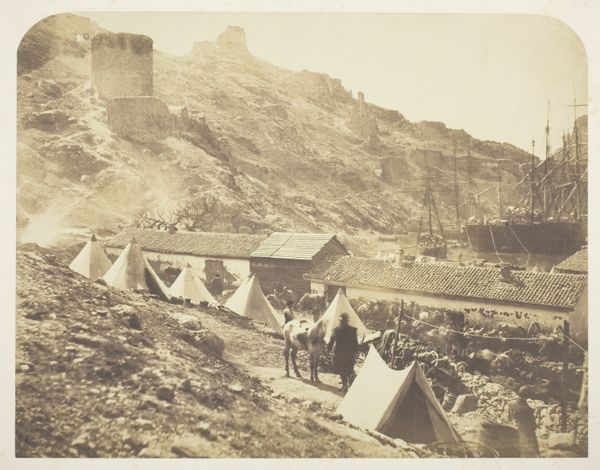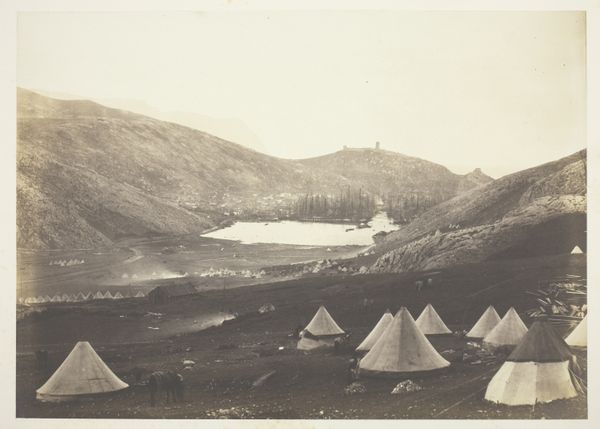
photography
#
16_19th-century
#
landscape
#
photography
Dimensions: 25.1 × 29.2 cm (image/paper); 32.1 × 40.5 cm (mount/page)
Copyright: Public Domain
Curator: The mood here is strikingly desolate. There’s a palpable sense of quiet dread. Editor: And a timely image for us to consider, given current geopolitics. This is James Robertson’s photograph, "Harbour of Balaklava," taken in 1855. We're fortunate to have it here at the Art Institute of Chicago. Curator: So, it depicts Balaklava during the Crimean War, I presume? All those tents evoke a transient sense of community—soldiers, but displaced and vulnerable. The tonal range makes it feel fragile. The composition almost looks like a theater stage. Editor: Exactly. It was a conflict rife with missteps and questionable motives. Robertson’s photography provides an important record—a contrast to the idealized battle scenes painted during the time. These images are rarely of the actual combat but rather, about place and infrastructure. He worked with the British Army, after all. This image brings up questions about the purpose and function of documentary war photography in service of institutional agendas. Curator: Looking closer, those figures clustered by the small building near the tents add a poignant human element to the starkness, a community. There is also a lonely little architectural ruin topping the distant mountain in the background; it is reminiscent of the ruins made famous during Romanticism, a far cry from the aesthetic elevation one expects from such references, here a marker of loss and the distance of glory. The framing itself, with that high vantage point, speaks to power, to seeing and surveying the landscape as a space of control and possession. Editor: He wasn’t on the front lines, obviously, but these were still difficult conditions and, technologically, photography was in its infancy. This photograph acts as both a historical record and an interesting formal exercise in light and shadow, distance and compression, the sheer labor in organizing an aesthetic regime that could still function as reportage in its moment. Robertson was also a successful coin engraver working at the Imperial Ottoman Mint at this point in his career. That's important. Curator: Yes, the framing really underscores how land is not merely terrain; rather, it’s about contested ground, human presence, political strategy, and loss. This work demands that we question who holds the narrative power and who is relegated to the position of the observed. Editor: It reminds us that photography can expose unseen, complicated layers beneath even the most familiar and picturesque landscapes. The narratives embedded in works like "Harbour of Balaklava" challenge us to reflect on historical context and present realities and the function and burden of political representations.
Comments
No comments
Be the first to comment and join the conversation on the ultimate creative platform.

